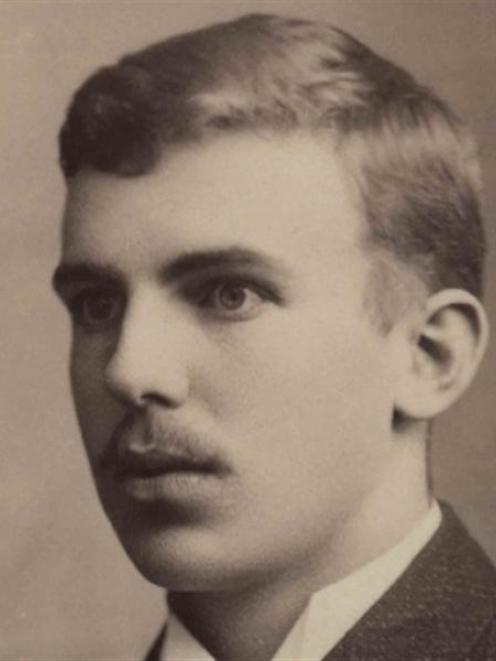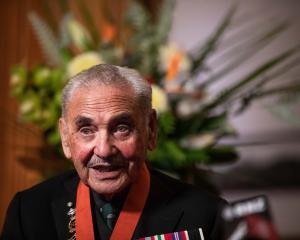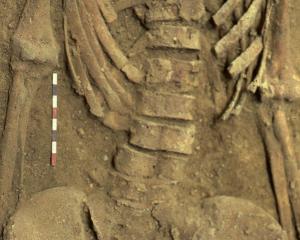
If a New Zealander is asked the question "for what is Rutherford most famous?" the invariable answer is "for splitting the atom".
But if a physical scientist worldwide is asked the same question, the response is usually "the nuclear atom". Rutherford's Nobel Prize was the first awarded to someone raised and educated in New Zealand, and the first for research carried out in Canada.
He had explained the new and peculiar field of radioactivity.
Some elements spontaneously transmuted into slightly lighter elements and there was nothing we could do about it. His Nobel citation stated the award was for his investigations into the disintegration of the elements and the chemistry of radioactive substances.
Surprisingly, he was awarded it for chemistry when many chemists wouldn't accept his transmutation theory, as they had only recently accepted immortal atoms as the basis of their subject.
And it is typical that he received it on his second nomination.
Hehad two attempts at each of the three scholarships he received in New Zealand, which financed him to go to secondary school, to university, and to a research scholarship overseas.
Canterbury College In 1892, in conjunction with his final BA exams at Canterbury College, one of the three colleges of the University of New Zealand, Rutherford won the one scholarship nationwide to allow another year to study for a master's degree in mathematics.
In 1893, he returned to Canterbury College and took double honours in mathematics and physical science. For his original research, Rutherford chose to examine whether iron was magnetic at very high frequencies.
This was stimulated by Nikola Tesla's use of his high-voltage, high-frequency transformer, the Tesla Coil, to transmit power without using wires.
During 1893 and 1894, Rutherford developed several inventions to aid his researches, in particular a magnet needle method of detecting and quantifying fast current pulses.
This involved the highly damped oscillations from a Leyden jar discharge and, for yet higher frequencies, from a Hertzian oscillator.
These formed the basis of his first two research papers, both published in New Zealand.
In 1895, he was awarded an Exhibition of 1851 Science Scholarship which he took at the Cavendish Laboratory, Cambridge University, because the director, J.J.Thomson, had written one of the key electricity books.
England Rutherford arrived in Cambridge in October 1895 and continued using his magnetic needle to study the dielectric properties of materials.
In February 1896, he held the world record for the distance over which wireless electric waves could be detected (half a mile).
Although this had the potential for commercial success, especially for allowing ships to detect a lighthouse in fog, events diverted Rutherford to other fields.
Thomson asked Rutherford to join his researches.
Rutherford studied the diffusion of the negative particles in a gas discharge, ionising his gas using ultraviolet light.
In 1897, Thomson did a crucial experiment to show that the negatively charged particles were less than of the mass of a hydrogen atom.
He had discovered the electron, the first subatomic particle, and Rutherford was an immediate convert. Rutherford was the right man in the right place at the right time.
Just before New Year of 1896, three months after he had arrived in Cambridge, two amazing discoveries were made by sheer accident.
Roentgen in Germany discovered X-rays and, two months later, Becquerel in Paris discovered radioactivity.
Both types of ray would ionise air so Rutherford used them in his researches. But his interest soon turned to trying to understand what radioactivity was.
He found there were two types of rays emitted by radioactive materials. One, which wasn't very penetrating, he named alpha rays. The other, which was more penetrating, he named beta rays.
Canada In 1898, Rutherford was appointed to Canada's McGill University, one of the best-equipped physics laboratories in the world, to promote research.
He blew tobacco smoke into his ionisation chamber, thus demonstrating the principle of the modern smoke detector.
He discovered a radioactive gas (thorium emanation, now known as radon) and had his first female research student, Harriet Brooks, use diffusion methods to try to determine its molecular mass.
He had used the concept of half-life and published curves of the growth and decay of radioactivity.
Needing the help of a physical chemist, he asked Frederick Soddy, an unemployed chemist at McGill, to assist him with separating out radioactive solutions.
Very soon, they had the basis of radioactive decay chains. Rutherford had good evidence that alpha particles were merely high-speed helium atoms which had lost two electrons.
Knowing the decay chains, he dated minerals by heating them and collecting the helium gas which had been trapped in the mineral, thus initiating geological dating via radioactive techniques.
In this way, he dated the age of the Earth, extending considerably the age which physicists had calculated using cooling and the temperature gradient. Rutherford left McGill for Manchester University in 1907, to be closer to the centre of physics.
Thus Rutherford became known as a British physicist.
The Nobel Prize First awarded in 1901, the science Nobel Prizes were to be for the biggest advance during the previous year.
In physics, this stipulation had been bypassed to cover the great advances since 1895: Rontgen for X-rays; Becquerel, Pierre Curie and Marie Curie for radioactivity; Lenard for cathode rays; and, in 1906, J.J.Thomson for studies of the conduction of electricity by gases. Rutherford was nominated for the Nobel Prize in 1907 in both physics and chemistry, but did not win either.
The 1908 awards McGill University's John Cox's late nomination of Rutherford for 1907 had become an early nomination for 1908.
Rutherford was also nominated for the Physics Prize by a Swede and three Germans, and the Chemistry Prize by an Austrian and a Swede.
In 1903, the awarding of the physics prize to the two Curies and Henri Becquerel caused a demarcation dispute between the physics and chemistry committees, resolved by deleting the discovery of radium from the citation.
The chemists nonetheless made it clear that in future they would assert their right to make awards in the field of radioactivity.
In 1908, the physics and chemistry committees held a joint meeting to consider the assignment of two candidates who had been nominated for both prizes.
Dr de Laval, the Swedish inventor of the cream separator, the steam turbine and a device for measuring the butterfat content of milk, was assigned to physics whereas Rutherford's work was assigned as of fundamental importance to chemistry.
The physics committee eventually nominated Gabriel Lippmann of France for his method of colour photography. By the spring of 1908, the chemistry committee had Rutherford as its candidate, either alone or, as one nominator had suggested, with Frederick Soddy.
The chemistry committee's proposed citation stressed the importance of the disintegration theory for the chemistry of radioactive substances, and the 1908 Nobel Prize in Chemistry was awarded to Rutherford.
The lull before the stormOfficial announcements were secret until the December 10 presentation.
Even when the result was leaked on November 24, Rutherford had to deny all knowledge of the award, though winners had to be told ahead of time to prepare for the journey to Stockholm.
Later nominations Rutherford was remarkable among scientists in that he made major discoveries throughout his life. On two more occasions, he changed the way we view nature.
In 1911, he determined the nuclear structure of the atom and, in 1918, he artificially induced the transformation of an atom.
He had split the atom.
Though he was the world's first successful alchemist, it was typical of a scientist to turn something of no value (nitrogen) into something of no value (oxygen). In 1919, on Thomson's retirement, Rutherford was appointed the director of the Cavendish Laboratory.
The father of the electron had handed over to the father of the nucleus. From 1922 until the end of his life, Rutherford was occasionally nominated for another Nobel Prize.
As he had received a Nobel Prize in Chemistry in 1908, the 1923 committee ruled him out on formal grounds.
Their conclusion was illuminating.
" . . . his standing outside Sweden would not markedly increase by the award of a new Nobel Prize, nor would it markedly increase his possibilities for research, as these already are as great as possible after he received the most prestigious research position in the field of physics in the British Commonwealth."
Altogether, some nine Nobel prizemen spent their formative years in Rutherford's laboratories.
I feel sure that had another scientist made either of his second and third great discoveries, they would have been seriously considered for a Nobel Prize.
The chemistry committee were correct. Ernest Rutherford didn't need more fame.
On the death of Ernest Lord Rutherford of Nelson, the New York Times eloquently summed up his life.
"It is given to but few men to achieve immortality, still less to achieve Olympian rank, during their own lifetime. Lord Rutherford achieved both."













